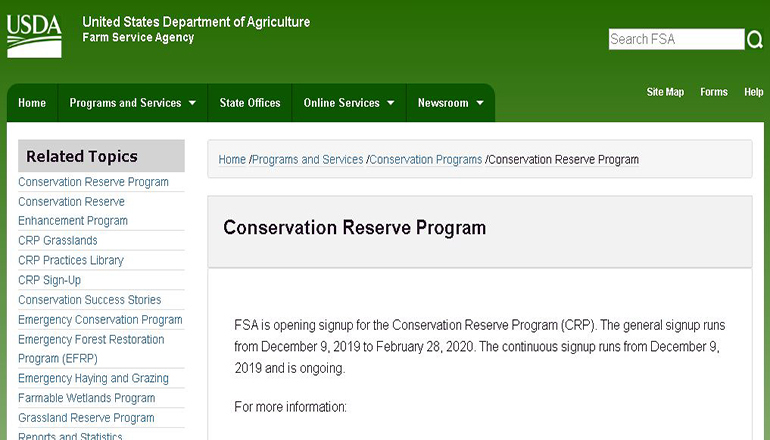The Department of Agriculture has issued more than $1.77 billion this year to agricultural producers and landowners through its Conservation Reserve Program, a critical piece of the Department’s efforts to support climate-smart agriculture and forestry on working lands. Right now, CRP’s more than 667,000 participants received payments from the USDA’s Farm Service Agency (FSA) for their voluntary conservation efforts on more than 23 million acres of private land. Since 2021, CRP has grown by 21 percent in terms of acres enrolled, a testament to the Biden-Harris administration’s program improvement efforts.
“Through the addition of tools to sequester carbon, reduce greenhouse gas emissions, and better quantify these efforts, while also including more Tribes and underserved producers, we’ve improved the Conservation Reserve Program for the nation’s natural resources and for agricultural producers and landowners,” said Agriculture Secretary Tom Vilsack. “These producers and landowners voluntarily place their land under contract and, in the spirit of stewardship, agree to establish and maintain prescribed conservation practices for the life of the contract. We’re grateful to all CRP participants who are addressing climate change proactively and conserving natural resources now and for future generations.”
Top five states for CRP participant payments:
- Iowa, $402,508,900
- Illinois, $172,723,800
- Minnesota, $150,773,400
- South Dakota, $129,545,200
- Missouri, $99,849,600
Improvements to CRP:
Since 2021, FSA has made improvements to the program:
- Introduced a climate-smart practice incentive for CRP general and continuous signups to reward participants who implement conservation practices that increase carbon sequestration and reduce greenhouse gas emissions.
- Enabled soil rental rate adjustments or rate flexibilities, potentially increasing rates where appropriate.
- Increased payments for practice incentives from 20 percent to 50 percent. This incentive, in addition to cost-share payments for continuous CRP practices, is based on establishment cost.
- Increased payments for water quality practices rates from 10 percent to 20 percent for specific water quality benefiting practices available through CRP continuous signup, such as grassed waterways, riparian buffers, and filter strips.
- Established a Grassland CRP minimum rental rate, benefiting over 1,000 counties with rates currently below the $13 minimum.
Additionally, FSA has improved the Conservation Reserve Enhancement Program (CREP), reducing barriers and making the program more accessible to a wider range of agricultural producers and new conservation partners. These program improvements include the ability for partners to provide matching funds in cash, in-kind contributions, or technical assistance, and the addition of full-time staff dedicated to working directly with CREP partners and program specialists in FSA’s state offices.
Since 2021, FSA has also partnered with the Cheyenne River, Rosebud, and Oglala Sioux Tribes in the first-ever Tribal Nations CREP agreements. In 2022, the USDA partnered with the South Dakota Department of Game, Fish & Parks in the Big Sioux River Watershed CREP agreement to aid farmers, ranchers, and agricultural landowners in enhancing water quality, reducing soil erosion, promoting wildlife habitat, and providing public hunting and fishing access. These CREP agreements reflect the USDA’s aims to expand the scope and outreach of its voluntary, incentive-based conservation programs to engage underserved producers.
FSA’s conservation programs have been prominent in 2023. FSA partnered with producers and landowners to enroll 3.9 million acres in CRP this year—including 927,000 acres through General CRP, 2.3 million acres in Grassland CRP, and 694,000 acres in Continuous CRP. These results highlight the enduring significance of CRP as a tool to help producers invest in the long-term health, sustainability, and profitability of their land and natural resources.
More Information:
CRP is a voluntary program contract with agricultural producers wherein environmentally sensitive agricultural land is allocated for conservation benefits. CRP participants establish long-term, resource-conserving plant species, such as approved grasses or trees, to control soil erosion, enhance water quality, and develop wildlife habitat. In exchange, FSA offers participants rental payments and cost-share assistance. Contract durations range between 10 and 15 years.
To learn more about CRP and other FSA programs, producers can contact their local USDA Service Center.


